I’ve been experimenting with and using LoRa APRS for a couple of weeks now. Here is the first post I wrote about getting started with it. If you haven’t read that one yet, I suggest you start there. I’ve also been trying to learn a bit more about the LoRa modulation (or “Frequency Shift Chirp Modulation”) protocol.
LoRa Modulation
This video offers a very good introduction to the specifics. It is a bit mathematical, so be prepared for that, but also accessible.
LoRa APRS as implemented in the code by Ricardo CA2RXU uses a spreading factor of 12. If you watched the video you know that this corresponds to a symbol set of 212 (4096), or 12 bits/symbol. That is 4096 different chirp waveforms! LoRa uses a pretty interesting method to discern one waveform from another, and therefore decode the corresponding symbol. Watch the video above as the author explains it better than I can.
What I am really interested in knowing is how this modulation technique performs in real-world applications with beaconing positions at low power.
LoRa APRS Practical Use
I’ve been trying to use LoRa APRS in a variety of use cases. I now have i-gates set up at my home and work locations. I am also building a portable LoRa APRS digipeater and/or i-gate that I can deploy as needed to additional coverage. That will be the subject of a future post.
The i-gate in my office (W0RMT-41) in downtown Denver is on the 7th floor of my building against a window facing northeast, and uses one of the small “Hershey’s kiss” 433 MHz mag mount antennas on top of my filing cabinet. I would call it a compromise setup for sure.
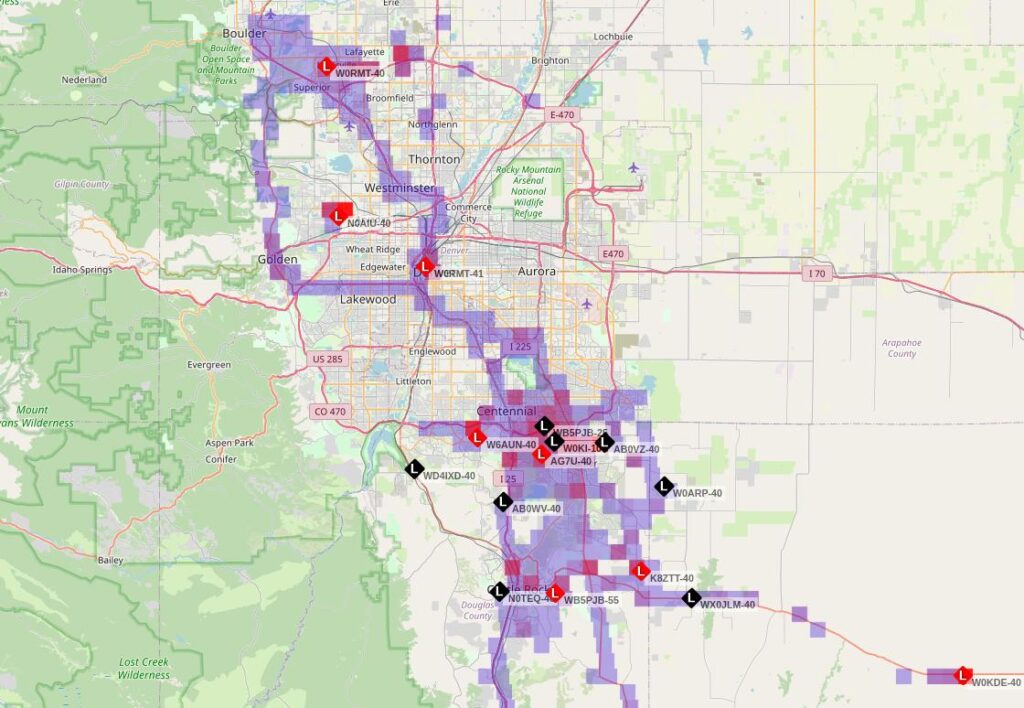
I have a tracker in my mobile with a 10W amplifier, and a low-power (100 mW) portable tracker that I use while walking and running. I have re-cased the low power tracker since my last blog post, thanks to AG7U for providing the 3D printed case!
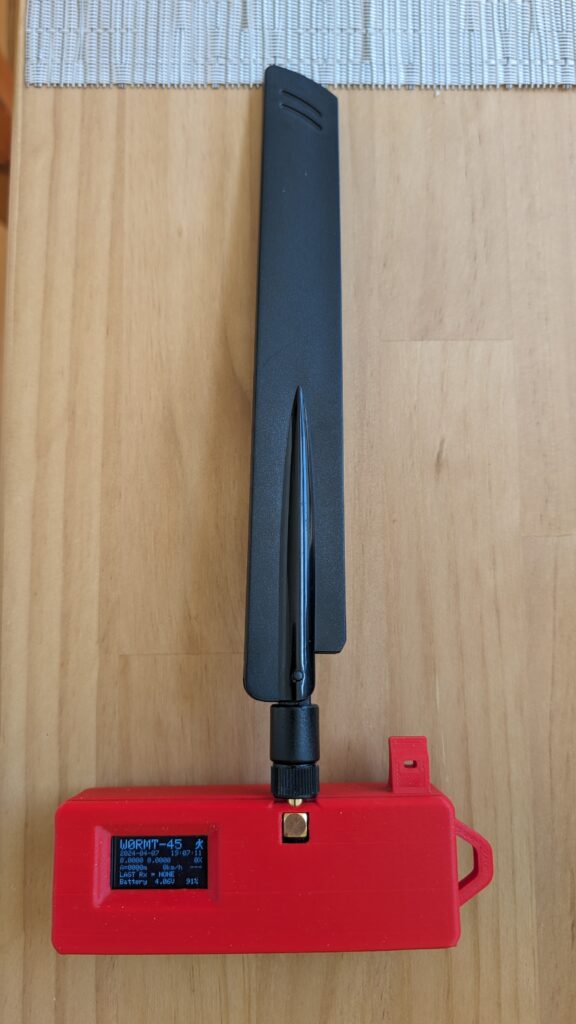
At 10W, my mobile tracker does very well in all of the areas that I drive on a regular basis. I get solid tracks that are much better than those I get using VHF FM APRS and the same smart beaconing settings. Here is a typical track from home to the office, before I installed an i-gate in my office in downtown Denver.
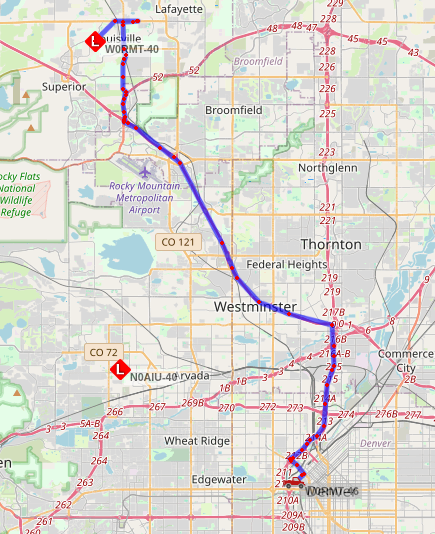
Since installing the i-gate in my office, I also get good coverage for the 100 mW tracker downtown. In this example, you can see where I parked my truck (W0RMT-46), the truck of another local amateur using LoRa APRS (AB0VZ-45), and my walk from the truck to the office (W0RMT-45).
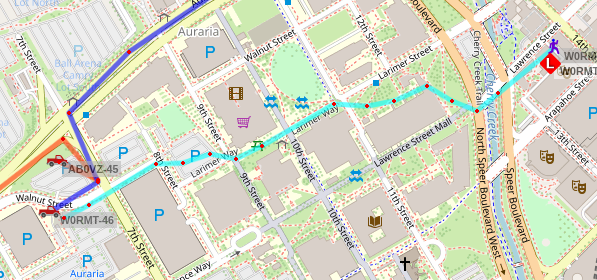
And here is where it gets impressive, I think. I went for a run of about 5 miles from the office and wore the tracker in my running belt with the antenna against my back. I was curious to see if my office i-gate would receive my beacons. Part of this run is actually below the street grade along Cherry Creek, and then things open up a bit more once I get to the Platte River and head south. While there is certainly a bit of wonkiness in the below grade section, I would still consider this a full coverage track. Amazing, I think.
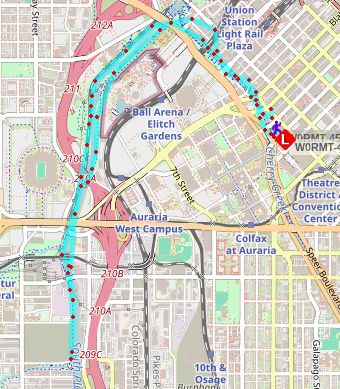
And here is a little 3 mile run from home while wearing the tracker in my running belt, with the terrain at or below the home i-gate. This track has great coverage. Remember- the tracker is only 100 mW!
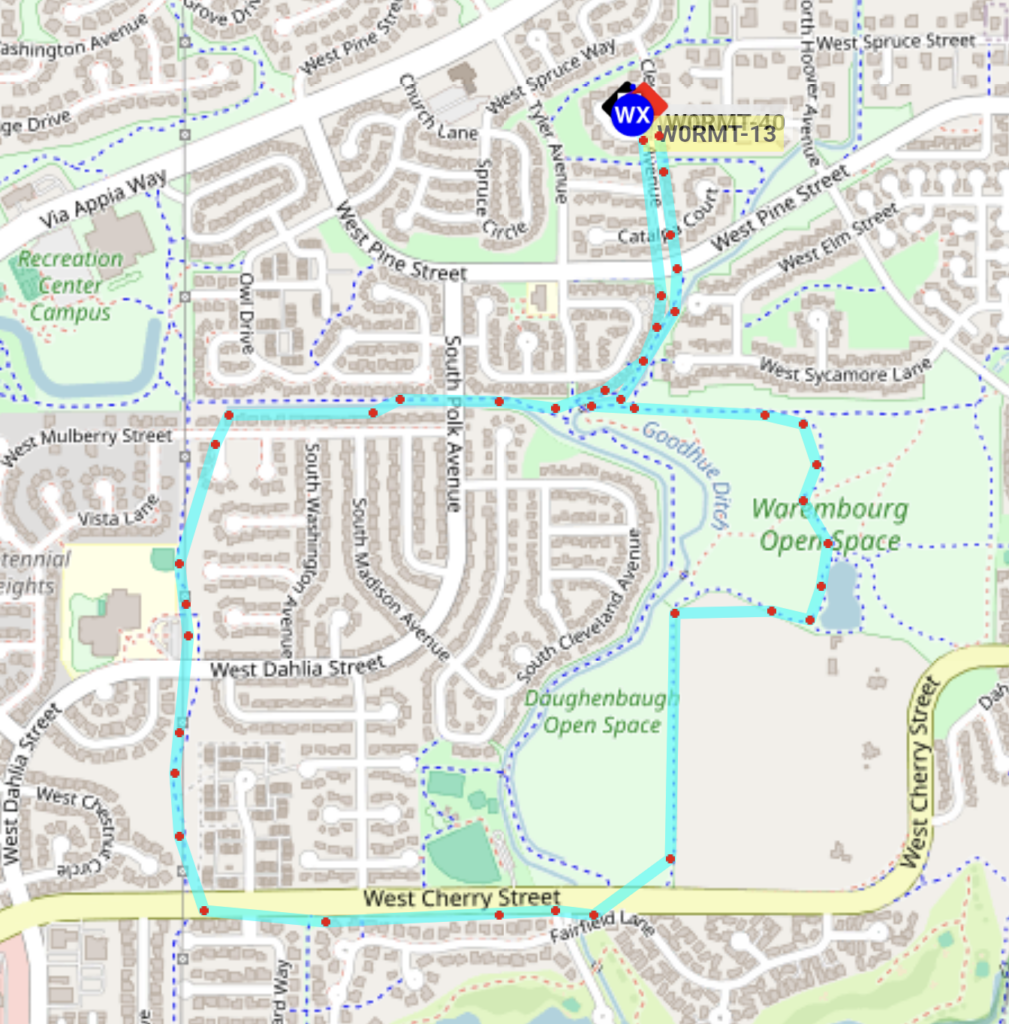
Finally, I have been pushing the limits of the little 100 mW tracker in terms of power and terrain when running from home. I’ve done a couple of tests wearing the tracker in my belt as described above, and also while wearing it in the front of my running vest/pack.

Here are the tracks from two test runs, one (green track) with the tracker in my belt, and the other (blue track) with the tracker in my vest. The actual route is shown in red, as recorded by my watch.
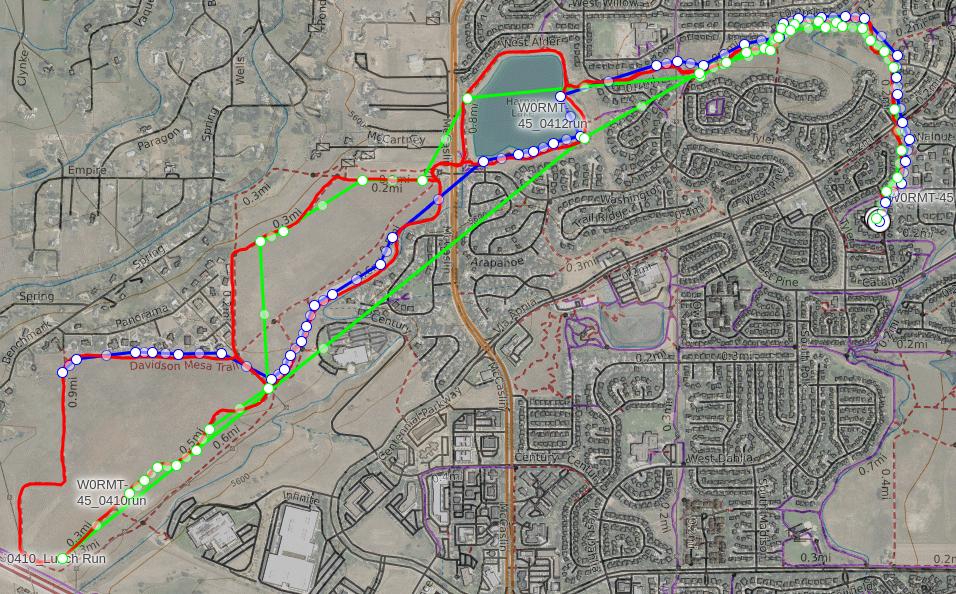
To be fair, this was challenging for the little tracker as the run goes up on to a mesa above my home digi, and then out across the mesa. So there is no line of sight, and no good reflection surface either (as there is in the city). Here is the profile (out and back).

I’ve got a lot more testing ideas and I am looking forward to plaing with the portable digi/i-gate once I build that.
Isn’t amateur radio a great hobby? There are so many things to pursue and learn about. It’s fun when you open a new door and develop new skills and knowledge.
Leave a Reply